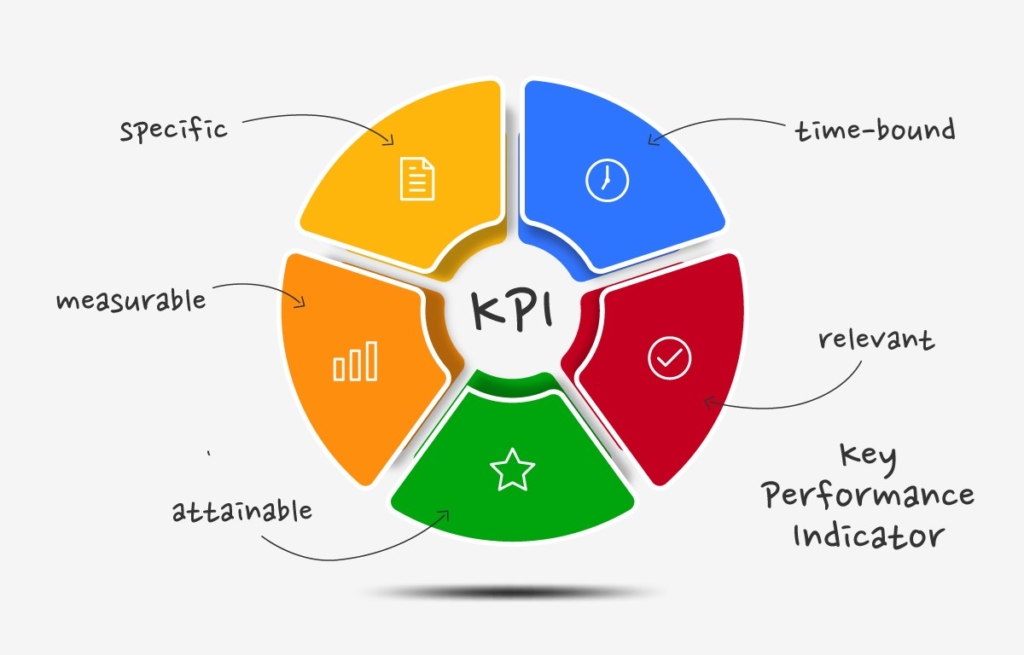
Unlocking Business Potential: The Power of Key Performance Indicators (KPIs) for Small Businesses
In today’s fast-paced and highly competitive landscape, small businesses are constantly striving to achieve growth and stay ahead of the curve. Today, it is crucial for small businesses to have a clear understanding of their goals and progress. This is where Key Performance Indicators (KPIs) step in as indispensable tools. KPIs enable businesses to measure, monitor, and optimize their performance, providing valuable insights that can drive growth and deliver hidden insights. In this blog post, we delve into why KPIs are essential for small businesses seeking to accelerate their growth trajectory.
Focus on Strategic Objectives
Small businesses often face resource constraints and need to maximize their efficiency. KPIs help entrepreneurs define and prioritize their strategic objectives. By aligning KPIs with their broader goals, businesses can ensure that their efforts are focused on what truly matters. Whether it’s increasing revenue, improving customer satisfaction, or enhancing operational efficiency, KPIs help to provide a clear roadmap, guiding decision-making and resource allocation.
Here are the Top 10 KPIs a small business should monitor:
Revenue Growth: Measure the percentage increase in your business’s revenue over a specific period, indicating its financial health and success.
Gross Profit Margin: Calculate the percentage of revenue remaining after subtracting the cost of goods sold, indicating profitability and efficiency in production.
Customer Acquisition Cost (CAC): Determine how much it costs to acquire a new customer, including marketing and sales expenses, to assess the effectiveness of your customer acquisition strategies.
Customer Lifetime Value (CLTV): Calculate the total revenue generated by a customer over their entire relationship with your business, helping you understand the long-term value of each customer.
Customer Churn Rate: Measure the percentage of customers who stop using your products or services over a given period, highlighting customer retention and satisfaction.
Conversion Rate: Evaluate the percentage of website visitors or leads that convert into paying customers, indicating the effectiveness of your sales and marketing efforts.
Average Order Value (AOV): Determine the average amount customers spend per transaction, allowing you to track the value of each sale and identify opportunities for upselling or cross-selling.
Inventory Turnover: Measure how quickly your inventory is sold and replaced, providing insights into inventory management efficiency and cash flow.
Employee Productivity: Track the productivity of your employees by measuring their output or sales performance, helping you optimize resource allocation and identify areas for improvement.
Net Promoter Score (NPS): Gauge customer loyalty and satisfaction by measuring the likelihood of customers recommending your business to others, indicating the overall customer experience.
Measurement and Progress Tracking
To accelerate growth, small businesses need to consistently evaluate their performance and identify areas for improvement. These aforementioned KPIs serve as quantifiable metrics that enable businesses to measure their progress toward specific goals. By regularly tracking KPIs, businesses can gain valuable insights into their performance trends, spot emerging patterns, and make informed decisions accordingly. This data-driven approach fosters a culture of continuous improvement, leading to enhanced efficiency and accelerated growth.
Performance Evaluation and Accountability
Accountability is crucial for any entrepreneur or small business team. KPIs facilitate a systematic evaluation of individual and team performance, providing a transparent framework for accountability. By setting KPIs that align with individual roles and responsibilities, small businesses can foster a results-oriented culture. Employees become more aware of their contributions to the overall growth and are motivated to consistently meet or exceed their targets. This creates a positive cycle of productivity and performance. According to Forbes, “the use of KPIs in more than 350 enterprises and found that the best-in-class companies derive performance improvements, including a 10% increase in the time-to-decision making, a 9% increase in both profitability and revenue growth and customer performance improvements of 9% in both net-new customers gained and customer satisfaction.”
Identification of Bottlenecks and Opportunities
Small businesses often face various challenges and bottlenecks that hinder growth. KPIs play a vital role in identifying these roadblocks and highlighting areas where improvements are needed. By closely monitoring KPIs, businesses can pinpoint inefficiencies, bottlenecks, or underperforming processes. This enables them to take proactive measures to address these issues and optimize their operations. Additionally, KPIs also help identify untapped opportunities, enabling decision-makers to capitalize on market trends, customer demands, or emerging technologies. For example, a manufacturer could track the KPI of production efficiency, measuring the ratio of actual output to the planned output to optimize manufacturing processes, reduce waste, and increase overall productivity.
Data-Driven Decision-Making
In today’s digital era, data is everything. Establishing KPIs provide small businesses with meaningful data that drives informed decision-making. By analyzing KPI trends and patterns, businesses can gain insights into what strategies are working and what needs adjustment. Data-driven decision making minimizes guesswork and reduces the risks associated with subjective judgments. It empowers small businesses to make agile decisions that are backed by evidence, leading to more effective resource allocation and accelerated growth.
Conclusion
For small businesses looking to accelerate growth and unlock their true potential, Key Performance Indicators (KPIs) are invaluable tools. By aligning KPIs with strategic objectives, measuring progress, fostering accountability, identifying bottlenecks, and making data-driven decisions, businesses can optimize their operations and drive growth. KPIs provide a structured framework that empowers small businesses to focus their efforts, track their performance, and adapt to changing market dynamics. Embracing the power of KPIs, while not always straightforward, can be a transformative step for small businesses, propelling them toward accelerated growth and long-term success in today’s competitive business landscape.